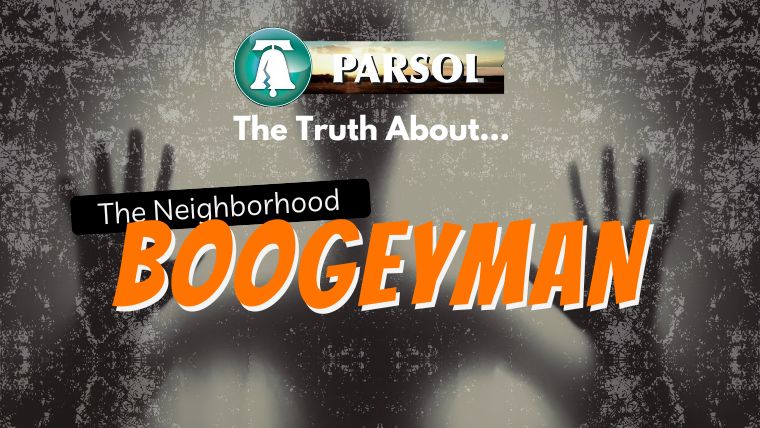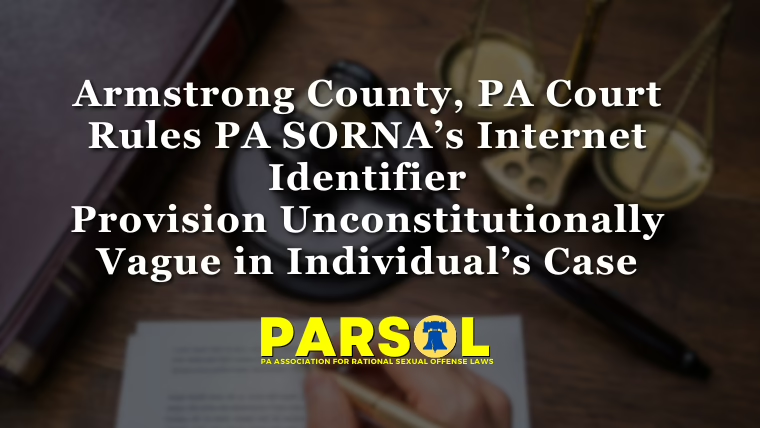October is here and it’s almost that frightful time of the year. The goblins, ghouls, and ghosts are out. But of course, we can’t forget the neighborhood “boogeyman”. He doesn’t wear a costume or put on Halloween makeup. He doesn’t go around with an ax, machete, or chainsaw. He doesn’t hide underneath the bed or in the closet waiting to strike at the right moment. His identity is known to many. To know his address is one mouse click away. His house looks like all the others on the block; yard mowed, bushes trimmed, fence freshly painted. Yet, thinking of him puts fear in parents’ minds, the plot of a Law and Order: SVU episode – the subject the media loves to cover. But there’s just one little problem: he isn’t a boogeyman at all.
He was a highly admired man in his community[1]. He had no history of any prior sexual offenses. And most shockingly, he isn’t likely to harm anyone else again[2]. So why is he perceived as the “boogeyman”? Is it because he’s an easy target? Is it because he was involved in a crime that involved the taboo area of sex – and activated the collective and individual sex panic[3] that permeates our culture? Or is it because the 24/7 national news outlets hyped up another story? The answer is “yes” to all of these questions.
Society automatically deems People Forced to Register (PFRs) the most heinous of all criminals because Megan’s Law was created as the result of a horrific crime. The legislators who created Megan’s Law had good intentions; but over the years, the Registry became inflated to include numerous other crimes. Today, the PA registry includes individuals who committed their offense as minors, were 18 years old while their partner was 16, and those with no sexual component to the crime (e.g., unlawful restraint, false imprisonment, or interference with the custody of a minor)[4].
Studies show that registries and other restrictive laws are ineffective as preventative tools[5]. They do not stop the majority of sexual offenses from happening[6]. In some states, non-sexual recidivism rates have increased because the stigma has encumbered a registrant’s successful reentry[7]. They need stable housing, a job, friends, and family to reintegrate successfully. Registries also negatively impact the PFRs’ families (innocent bystanders) by stigmatizing them, causing the loss of income or other resources, vigilantism, and social exclusion[8]. Slowly, we can change the narrative and create safer communities.
How can we do that: (1) Through the better direction of government funding, and (2) Education. Government funding should go towards primary prevention programs, individualized treatment programs, and coordinated professional support networks to promote desistance from sexual crimes, and importantly, to stop sexual violence from occurring in the first place. A coordinated professional support network could help ensure that PFRs have access to housing, employment, and prosocial networks. Education needs are multilayered and necessary at individual/family, community, and institutional levels. Effective prevention depends upon well-informed families, community members, community leaders, legislators – EVERYONE – so that we all can be better educated than we are now [9].
The data is clear, our current policies do not contribute to public safety, and ignoring the dignity of other humans by assigning them sub-human status of “boogeyman” creates conditions that increase the likelihood of offending rather than promote desistance from crime. PFRs are fellow human beings who have made wrong choices for a wide array of reasons. Sexually offending is not acceptable under any circumstance. We have a responsibility to work toward preventing these offenses while simultaneously acknowledging the inherent human dignity of all people regardless of their mistakes to work toward prevention of harm, and healing for those who have been harmed as well as for those who have harmed.
[1] “Stranger danger” is a myth. 93% of victims of sexual assault know their attacker prior to the assault. U.S. Department of Justice, Bureau of Justice Statistics (2000). Sexual Assault of young children as reported by law enforcement: Victim, incident, and offender characteristics. Washington, DC: U.S. Department of Justice. Retrieved from https://www.bjs.gov/content/pub/pdf/saycrle.pdf
[2] 2008 PA 3.1% re-offense rate is calculated using PA DOC 2013 Recidivism Report data of 0.6% forcible rapes, 0% statutory rapes, and 2.5% other sexual offenses, p. 22 table 14.
[3] Lancaster, Roger N. Sex Panic and the Punitive State. University of California Press. 2011
[4] 42 Pa.C.S. § 9799.14(b)
[5] Letourneau, E. J., Levenson, J. S., Bandyopadhyay, D., Sinha, D., & Armstrong, K., S. (2010). Evaluating the Effectiveness of Sex Offender Registration and Notification Policies for Reducing Sexual Violence Against Women, Final Report. Washington DC: U.S. Department of Justice. Retrieved from https://www.ojp.gov/pdffiles1/nij/grants/231989.pdf
[6] Over 95% of new sexual crimes are committed by persons NOT on a registry.- Sandler, J. C., Freeman, N. J., & Socia, K. M. (2008). Does a watched pot boil? A time-series analysis of New York State’s sex offender registration and notification law. Psychology, Public Policy, and Law, 14(4), 284–302. https://doi.org/10.1037/a0013881
[7] Prescott, J. J. Do Sex Offender Registries Make Us Less Safe? Regulation 35, no. 2 (2012): 48-55.
[8] Leon, Chrysanthi S. and Kilmer, Ashley R. (2022). “Secondary Registrant”: A New Conceptualization of the Spread of Community Control.
[9] Luciana C. Assini-Meytin, Rebecca L. Fix & Elizabeth J. Letourneau (2020): Child Sexual Abuse: The Need for a Perpetration Prevention Focus, Journal of Child Sexual Abuse, DOI: 10.1080/10538712.2019.1703232




![stuckIn1995_rally_header - PARSOL - Pennsylvania Assoc for Rational Sex Offense Laws (PA Megan's Law Resources) PARSOL Board Chair Josiah Krammes speaks at the PA Capitol Rotunda flanked by State Reps. Emily Kinkead and Tim Briggs (28 Oct 2025) [John Dawe/PARSOL]](https://parsol.org/wp-content/uploads/2025/10/stuckIn1995_rally_header.avif)